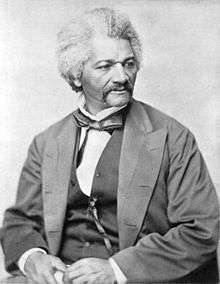Life and Times of Frederick Douglass

Life and Times of Frederick Douglass is Frederick Douglass' third autobiography, published in 1881, revised in 1892. Because of the emancipation of American slaves during and following the American Civil War, Douglass gave more details about his life as a slave and his escape from slavery in this volume than he could in his two previous autobiographies (which would have put him and his family in danger). It is the only one of Douglass' autobiographies to discuss his life during and after the Civil War, including his encounters with American presidents such as Lincoln and Garfield, his account of the ill-fated "Freedman's Bank", and his service as the United States Marshall of the District of Columbia.
Sub-title: Complete History to the Present Time. Including His Connection with the Anti-Slavery Movement; His Labor in Great Britain as well as in His Own Country; His Experience in the Conduct of an Influential Newspaper; His Connection with the Underground Railroad; His Relations with John Brown and the Harper's Ferry Raid; His Recruiting the 54th and 55th Mass. Colored Regiments; His Interviews with Presidents Lincoln and Johnson; His Appointment by Gen. Grant to Accompany the Santo Domingo Commission; Also to a Seat on the Council of the District of Columbia; His Appointment as a United States Marshall by President R.B. Hayes; Also His Appointment by President J.A. Garfield to be Recorder of Deeds in Washington; with Many Other Interesting and Important Events of His Most Eventful Life, with an Introduction by Mr. George L. Ruffin of Boston, Hartford, Conn., Park Publishing Co., 1881.[1]
See also
References
- ↑ "Frederick Douglass". essayraptor. Retrieved 12 March 2016.
External links
- The Life and Times of Frederick Douglass: From 1817-1882
- The Life and Times of Frederick Douglass: 1817-1892
- The Frederick Douglass Papers Project
-
 Life and Times of Frederick Douglass public domain audiobook at LibriVox
Life and Times of Frederick Douglass public domain audiobook at LibriVox